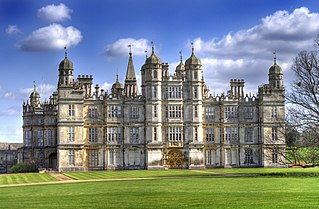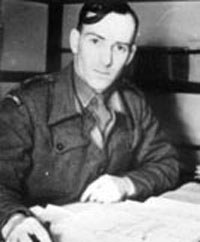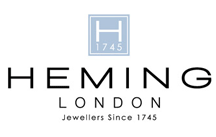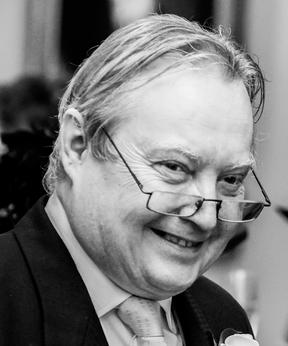Related Research Articles

The Society of Antiquaries of London (SAL) is a learned society of historians and archaeologists in the United Kingdom. It was founded in 1701, received its royal charter in 1751 and is a registered charity. It is based at Burlington House in Piccadilly, a building owned by the UK government.

The Worshipful Company of Goldsmiths, commonly known as the Goldsmiths' Company and formally titled The Wardens and Commonalty of the Mystery of Goldsmiths of the City of London, is one of the Great Twelve Livery Companies of the City of London. The company's headquarters are at Goldsmiths' Hall, London EC2.

Antiques Roadshow is a British television programme broadcast by the BBC in which antiques appraisers travel to various regions of the United Kingdom to appraise antiques brought in by local people. It has been running since 1979, based on a 1977 documentary programme.

Burghley House is a grand sixteenth-century English country house near Stamford, Lincolnshire. It is a leading example of the Elizabethan prodigy house, built and still lived in by the Cecil family and is Grade I listed.

Newton Valence is a village and civil parish in the East Hampshire district of Hampshire, England. It is 4.4 miles (7.1 km) south of Alton, just off the A32 road.

A nef is an extravagant table ornament and container used in the Middle Ages and Renaissance, made of precious metals in the shape of a ship – nef was another word for a carrack in French. If not just used for decoration, it could hold salt or spices, or cutlery, or even napkins. The large nef depicted in the well-known calendar miniature for January from the Très Riches Heures du Duc de Berry is being used to hold, and perhaps wash, gilt dishes from the table service.

Sir Charles Leonard Woolley was a British archaeologist best known for his excavations at Ur in Mesopotamia. He is recognized as one of the first "modern" archaeologists who excavated in a methodical way, keeping careful records, and using them to reconstruct ancient life and history. Woolley was knighted in 1935 for his contributions to the discipline of archaeology. He married the British archaeologist Katharine Woolley.

Sir Max Edgar Lucien Mallowan was a prominent British archaeologist, specialising in ancient Middle Eastern history. He was the second husband of Dame Agatha Christie.

Rupert Leo Scott Bruce-Mitford was a British archaeologist and scholar. He spent the majority of his career at the British Museum, primarily as the Keeper of the Department of British and Medieval Antiquities, and was particularly known for his work on the Sutton Hoo ship-burial. Considered the "spiritus rector" of such research, he oversaw the production of the monumental three-volume work The Sutton Hoo Ship-Burial, termed by the president of the Society of Antiquaries as "one of the great books of the century".

The Burghley Nef is a parcel-gilt salt cellar made in Paris in 1527–28. It is in the form of a late medieval ship, the hull made from a nautilus shell. The ship sits on the back of a mermaid on an hexagonal base. The height is 34.8 centimetres (13.7 in).

Geoffrey Charles Munn, OBE, MVO, FSA, FLS is a British jewellery specialist, television presenter and writer. He is best known as one of the experts on the BBC's Antiques Roadshow.

Peter Archambo I (1699–1759), in his time Peter Archambo, was a Huguenot silver- and goldsmith. He was the English-born son of the Huguenot refugee Archambault family from France. In 1710 he was apprenticed to the notable Huguenot goldsmith Jacob Margas.
Philip Thorpe Priestley BSc FSA MBHI was an English scientist and inventor.
Thomas Steven Roberts was an English designer and fashion entrepreneur who operated prominent independent retail outlets including pop art boutique, Mr Freedom, and the 1980s decorative arts and homewares store, Practical Styling.
Sir Charles James Jackson was a British businessman, collector, barrister, newspaper executive, politician, and writer, who was an authority on antique gold and silver plate.

Heming is a British jewellery company, founded in London in 1745. The company has a showroom in the Piccadilly Arcade near to the original store on Piccadilly.

Ann-Olympe Bateman was an English silversmith. She married into a distinguished family of London silversmiths. She made work in the Neoclassical style in partnership with her brother-in-law, Peter Bateman. Peter and Ann's husband, Jonathan, joined the business established by their parents, Hester and Jonathan Bateman. Ann's first mark was registered in 1791, the year her husband died and left all his property to his wife. A third generation of Batemans, Ann's son, William, joined the partnership in 1800. Thus, there are silver objects that bear one, two, and even three Bateman marks. All of the Batemans who worked in the family business are listed in the official registers of London's Goldsmiths' Hall.

Herbert James Maryon was an English sculptor, conservator, goldsmith, archaeologist and authority on ancient metalwork. Maryon practiced and taught sculpture until retiring in 1939, then worked as a conservator with the British Museum from 1944 to 1961. He is best known for his work on the Sutton Hoo ship-burial, which led to his appointment as an Officer of the Order of the British Empire.

Charles Henry Truman, FSA, was an art historian and a leading authority on gold boxes.

George Wickes was an English silversmith who in 1735 founded the company that was to become Garrard & Co.
References
- ↑ Salon (Society of Antiquaries of London Online Newsletter) #71; published February 14, 2020; retrieved October 15, 2023
- 1 2 3 4 "Obituary: Arthur Grimwade; Leading expert in historic plate.", by Philippa Glanville; in The Independent; December 17, 2002; p. 18
- 1 2 Arthur Grimwade - World-renowned silver expert generous with his expertise, by Terry Mullaly, in The Guardian ; published December 17, 2002; retrieved October 15, 2023
- ↑ "Silver in London: the Parker and Wakelin Partnership 1760-1776", reviewed by Pippa Shirley; in Apollo , vol. 161, no. 516; published February 2005
- ↑ "Millions Under the Hammer", by Richard Seddon, in the Birmingham Post ; published 4 December 1965; p. 10
- ↑ London Goldsmiths, 1697–1837. Their Marks and Lives. By Arthur G. Grimwade. Pp. x + 728 + 8 pls. London: Faber & Faber, 1976. £35., reviewed by Graham Hughes, in The Antiquaries Journal ; volume 57, no. 1, March 1977; p. 146; https://doi.org/10.1017/S0003581500031097
- 1 2 3 4 5 "Arthur Grimwade", in The Times ; published December 3, 2002; p. 34
- ↑ " New Directors Of Christie's", in The Times ; published 1 May 1954; p. 3
- ↑ "Getting the Feel of Antiques", by Vivian Brown (Associated Press); in the Clovis News-Journal; published 14 July 1977; p. 19
- ↑ "News of the Day: Silver" in The Age ; 20 February 1962; p. 2
- ↑ "UCD Extension Course antique lovers' dream", in the Woodland Daily Democrat ; published September 30, 1971; p. 6